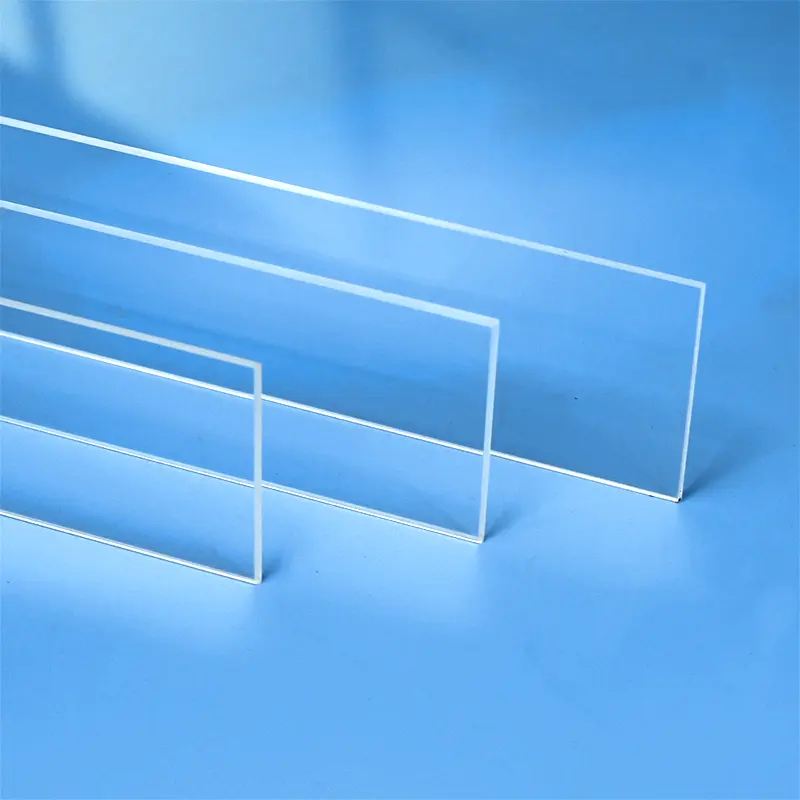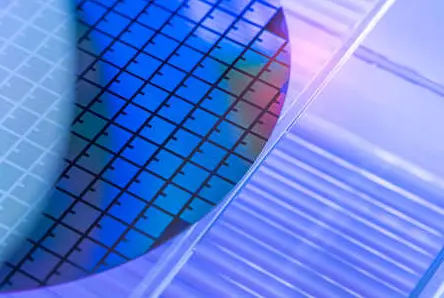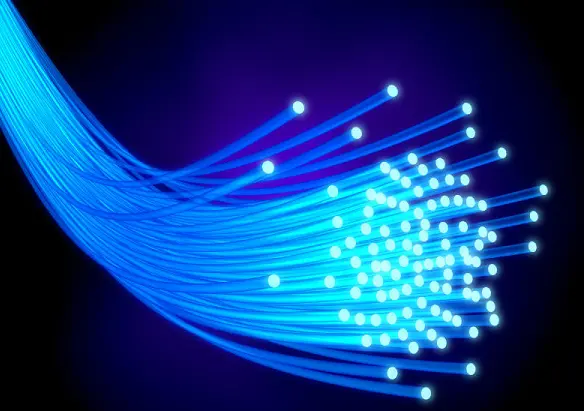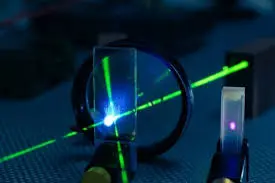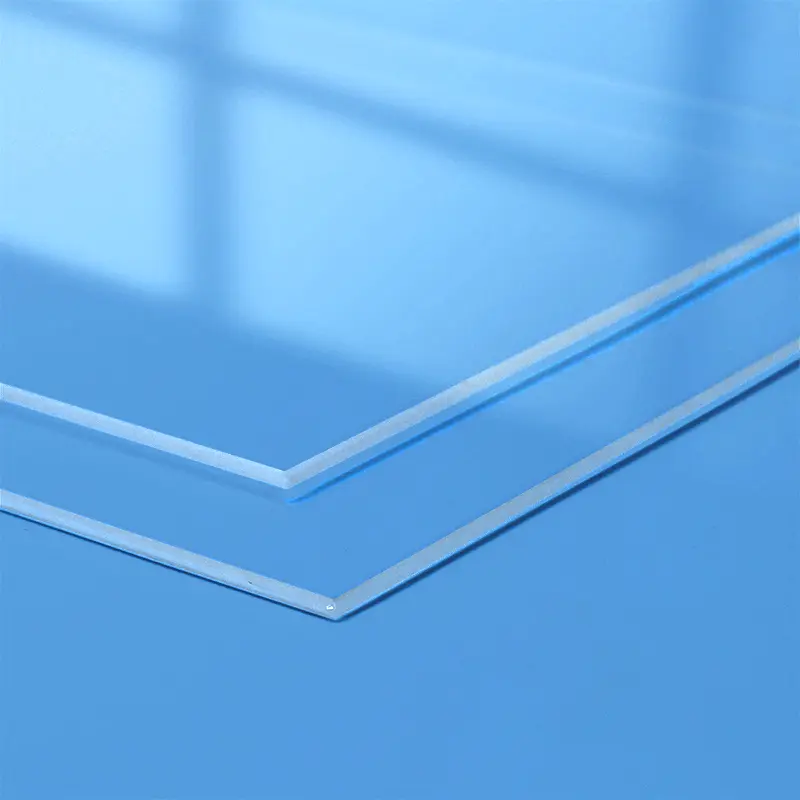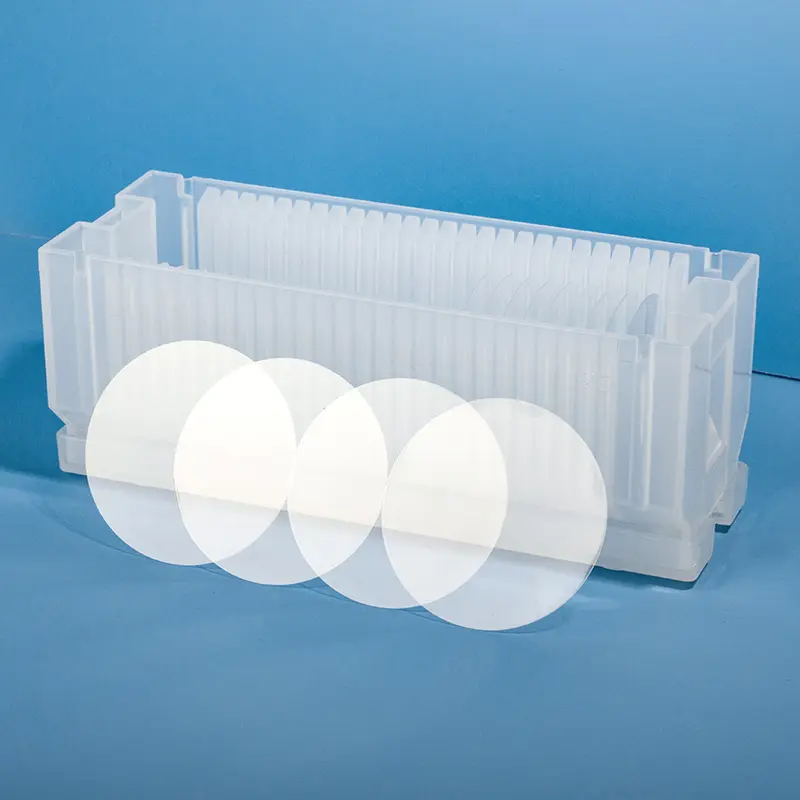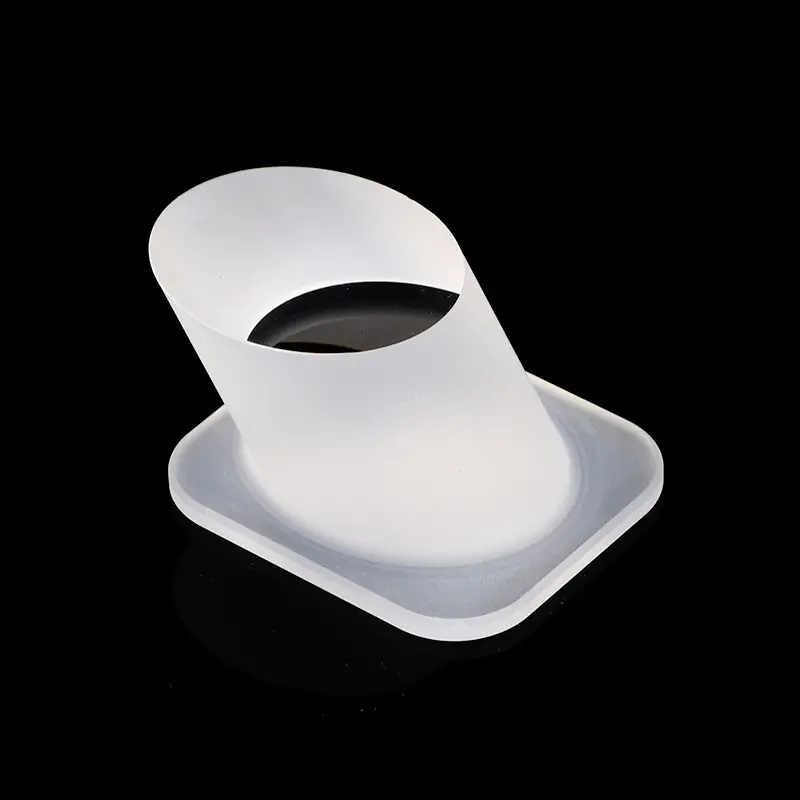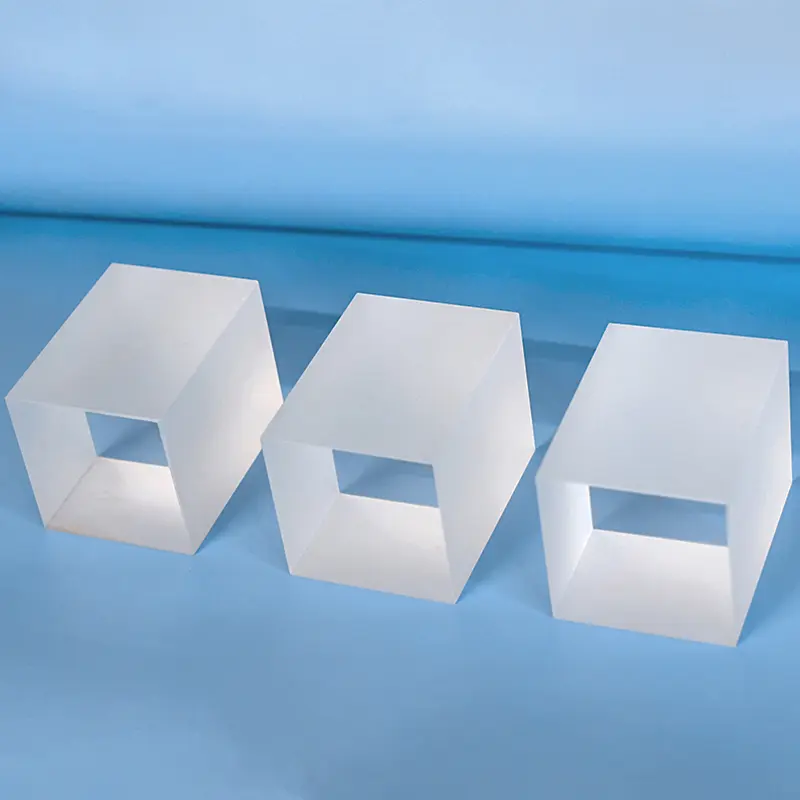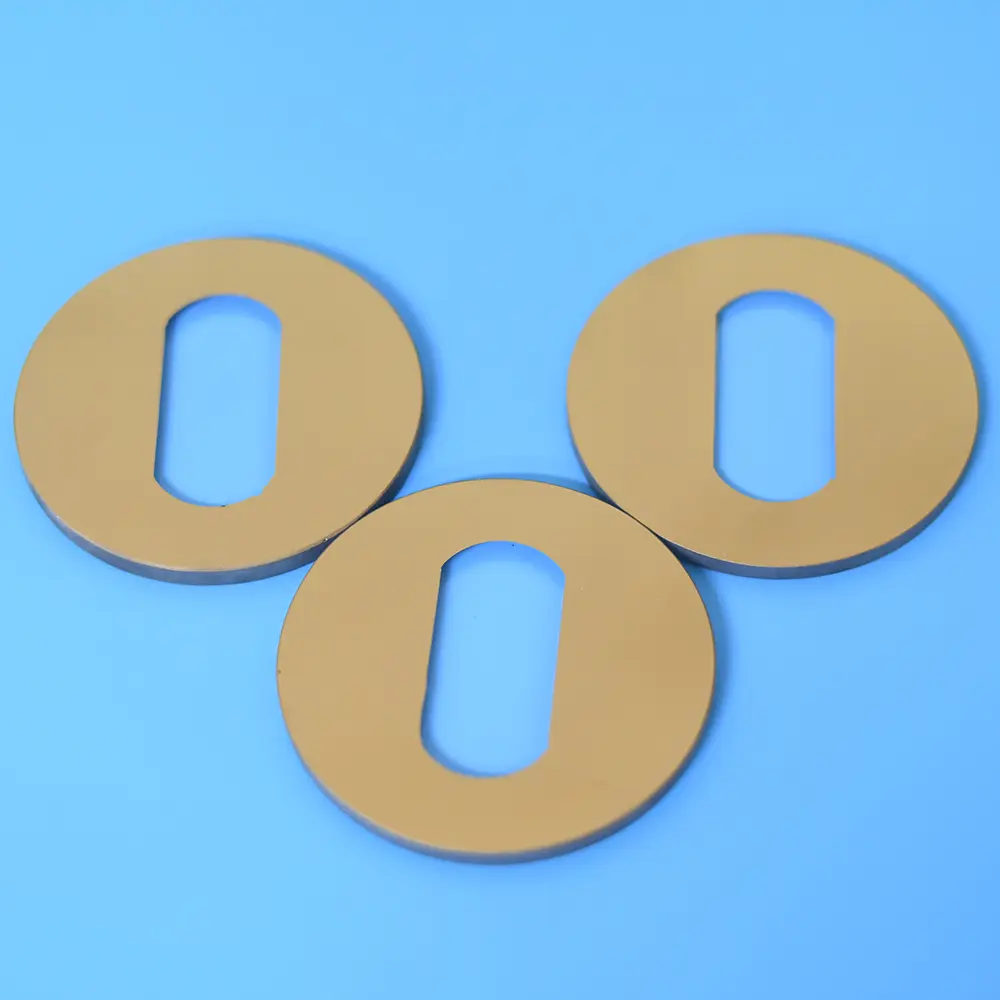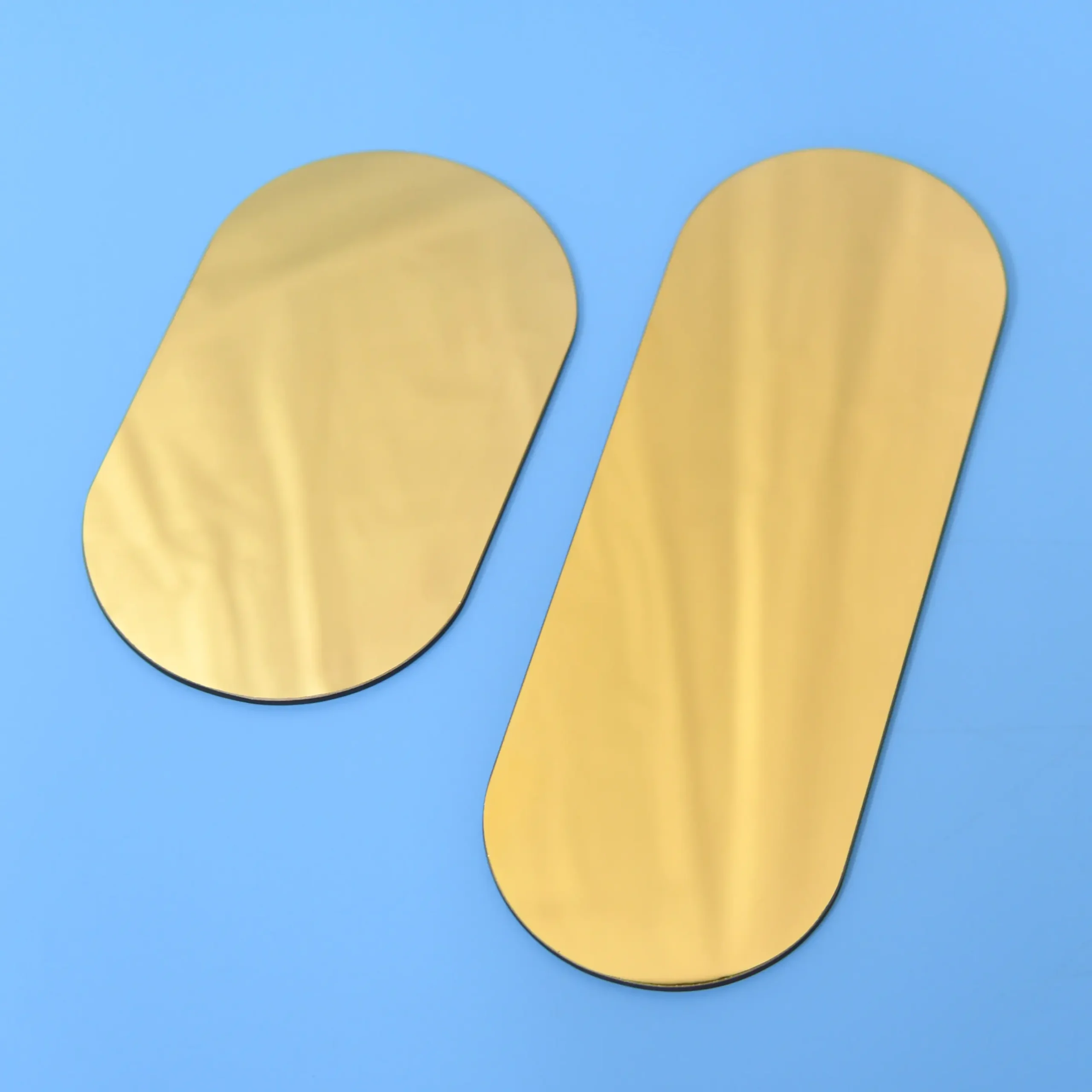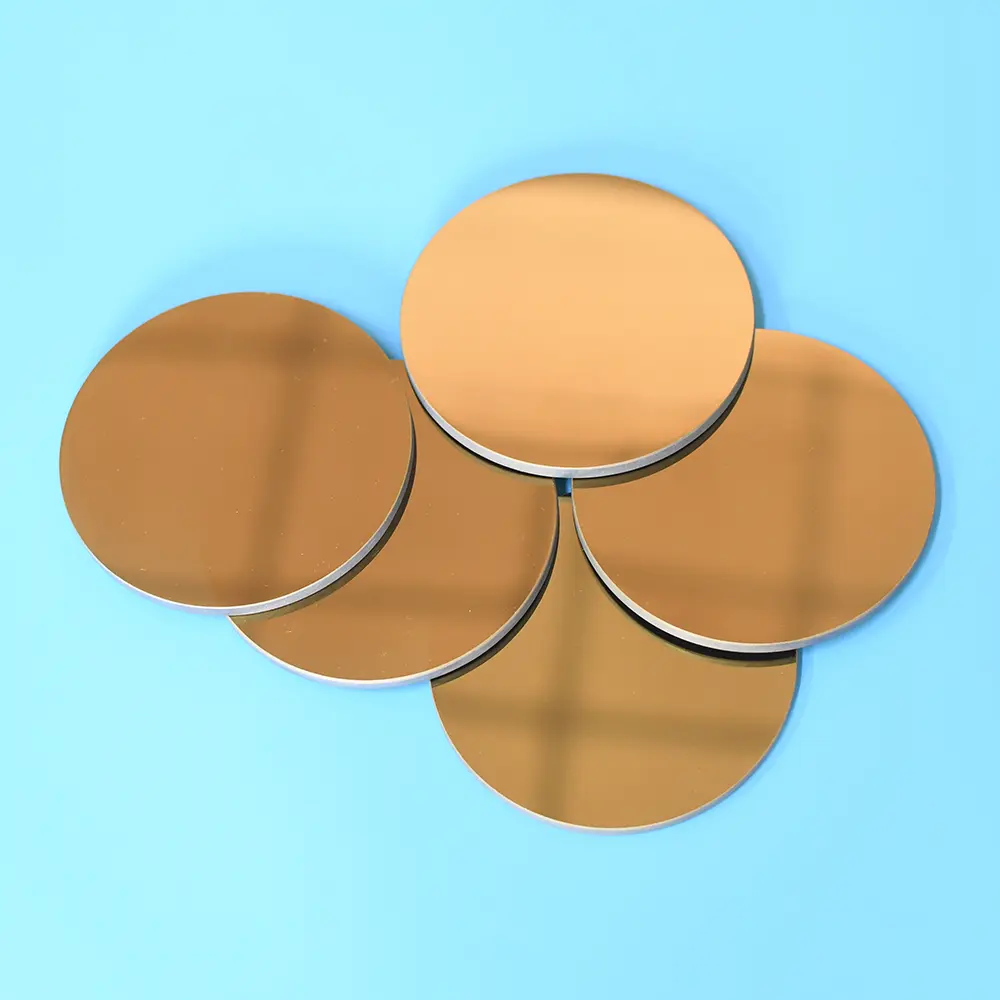Quartz glass plates are a high-transparency, high-temperature-resistant, and chemically stable material widely utilized in various fields, including optics, semiconductors, and fiber optic communications. Their low thermal expansion coefficient, excellent electrical insulation properties, and radiation resistance make them an indispensable material in high-tech applications.
| Contenido de la propiedad | Valores inmobiliarios |
|---|---|
| SiO2 | 99.99% |
| Densidad | 2,2×10³ kg/cm³ |
| Dureza | 5,5 - 6,5 Escala de Mohs 570 KHN 100 |
| Resistencia a la tracción | 4,8×10⁷ Pa (N/mm2) (7000 psi) |
| Resistencia a la compresión | >1,1×10⁹ Pa (160.000 psi) |
| Coeficiente de dilatación térmica | 5,5×10-⁷ cm/cm-°C (20°C-320°C) |
| Conductividad térmica | 1,4 W/m-°C |
| Calor específico | 670 J/kg-°C |
| Punto de ablandamiento | 1730°C (3146°F) |
| Punto de recocido | 1210°C (2210°F) |
| Punto de deformación | 1120°C (2048°F) |
| Temperatura de trabajo | 1200°C (2192°F) |
| Resistividad eléctrica | 7×10⁷ ohm cm (350°C) |
| Talla | Personalizado |
| Logotipo | Logotipo personalizado Aceptar |
High Transparency
Quartz glass plates exhibit extremely high transparency, particularly across the ultraviolet to infrared spectral range. This makes them invaluable in optical applications, such as the fabrication of lenses, optical fibers, and optical windows.
Resistencia a altas temperaturas
Quartz glass plates can withstand exceptionally high temperatures, with continuous operating temperatures up to 1100°C and short-term tolerance up to 1250°C. This makes them ideal for high-temperature environments, such as in semiconductor manufacturing and as viewports in high-temperature furnaces.
Chemical Stability
Quartz glass plates have excellent resistance to most chemicals, particularly acids. With the exception of hydrofluoric acid, they demonstrate near-inertness to almost all acids, making them highly sought after in chemical laboratories and industrial applications.
Low Thermal Expansion Coefficient
Quartz glass plates have a low thermal expansion coefficient, meaning their dimensions change very little with temperature variations. This is crucial for precision instruments and high-temperature equipment that require precise dimensional control, ensuring stability and reliability under fluctuating temperatures.
Escenario de aplicación
Industria de semiconductores
Quartz glass plates play a crucial role in the semiconductor supply chain, widely used in single-crystal silicon production and wafer manufacturing processes. Various quartz components and instruments are essential in cleaning, oxidation, photolithography, etching, and diffusion steps. For example, quartz crucibles are indispensable containers in the semiconductor industry, while high-purity quartz products such as quartz glass plates, quartz rings, and quartz boats are also used in these processes.
Fiber Optic Communication Industry
Quartz glass is the primary raw material in optical fiber manufacturing, with high-purity quartz glass accounting for more than 95% of the composition of optical fiber preforms. Significant amounts of quartz glass materials, such as holding rods and quartz cups, are consumed during optical fiber production processes like preform fabrication and fiber drawing.
Optics Field
Due to its excellent optical properties, quartz glass plates are used in the manufacturing of high-end optical lenses, prisms, and as substrate materials for TFT-LCD high-definition displays and IC photomasks. They ensure light transmission within the 185-3500 micrometer wavelength range, providing a clear visual experience.
Aerospace Field
Quartz glass plates, with their low density, high compressive strength, and good optical performance, are widely used in the aerospace sector for satellites and spacecraft. Radiation-resistant quartz glass can effectively control the attitude of spacecraft, and high-strength, radiation-resistant glass cover slips provide effective protection for the solar cell energy systems of spacecraft.
In semiconductor manufacturing, quartz glass plates are used to fabricate various components and containers, including quartz crucibles, quartz boats, and quartz rings. These are essential in processes such as cleaning, oxidation, photolithography, etching, and diffusion.
Quartz glass plates exhibit extremely high chemical stability, showing inertness to nearly all acids, with the exception of hydrofluoric acid. This property makes them highly sought after in chemical laboratories and industrial applications.
A low thermal expansion coefficient means that quartz glass plates exhibit minimal dimensional changes with temperature variations. This is crucial for precision instruments and high-temperature equipment that require precise dimensional control, ensuring stability and reliability even under fluctuating temperatures.
Preguntas más frecuentes
El vidrio de cuarzo es un material duro y quebradizo con excelentes propiedades físicas y químicas, dureza mecánica extremadamente alta, buen aislamiento eléctrico, resistencia a altas temperaturas y a la corrosión, rendimiento de retardo bajo y estable, buena transmitancia luminosa, etc. Se utiliza ampliamente en semiconductores, óptica, electricidad, química, aeroespacial, automoción y otros campos. Los materiales duros y quebradizos son difíciles de procesar, y muchos campos necesitan urgentemente procesos de corte con un pequeño colapso del borde, menos pérdida de material, baja rugosidad de la sección transversal y un amplio rango de grosor de corte. El método de corte tradicional del vidrio de cuarzo es el corte mecánico, es decir, el corte por disco. Los métodos de corte no tradicionales incluyen el corte por chorro de agua, el corte por hilo de descarga electroquímica, el corte por láser continuo, etc. El corte mecánico tiene un bajo coste, pero el contacto entre la rueda y el material causa un gran desgaste de la herramienta, y el material es fácilmente contaminado por la herramienta. El vidrio de cuarzo es propenso al colapso de los bordes, las microfisuras y la tensión residual, lo que afecta a la resistencia y el rendimiento del material. Es difícil conseguir un corte curvo y requiere un tratamiento posterior, como esmerilado y pulido. El corte por láser no entra en contacto directo con el material, no tiene tensión de contacto y puede realizar cortes curvos complejos. El láser de picosegundos tiene las ventajas de un diámetro de punto pequeño, alta precisión, tiempo de acción corto con el material y área de acción pequeña, y es adecuado para el procesamiento de materiales duros y quebradizos.
。

